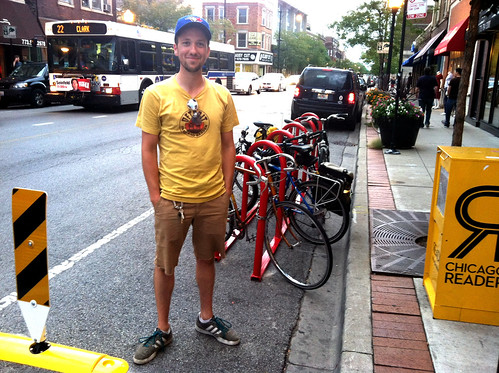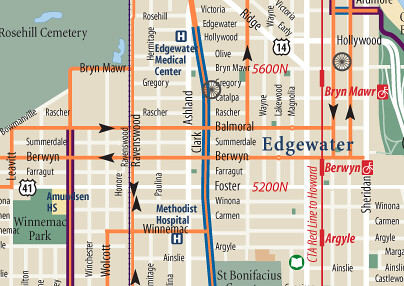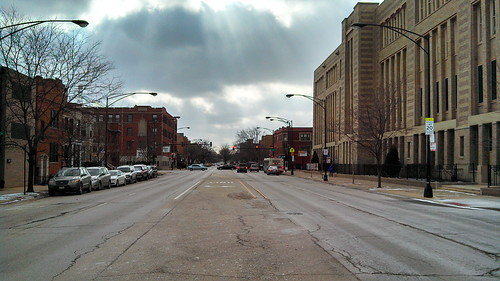Andersonville has long been ahead of the curve when it comes to sustainable transportation and public space initiatives. The neighborhood’s main drag on Clark Street is one of Chicago’s most vibrant pedestrian retail districts, and its chamber of commerce and aldermen have been strong supporters of bike facilities. The business strip recently became home to one of the city’s first People Spots, which replaced parking spaces with a miniature park, as well as two on-street bike racks.
So it’s no surprise that the Andersonville Development Corporation, a nonprofit that promotes sustainable community and economic development, want to bring bus rapid transit to the neighborhood. Brian Bonanno, sustainability programs manager for the group, says he’s disappointed that the city’s current proposal to build BRT shows express buses going no further north on Ashland Avenue than Irving Park Road, more than a mile south of the neighborhood. Speaking on the phone, Bonanno told me why he thinks BRT would benefit the community, and how he hopes to convince the city to include Andersonville in its plans:
Right off the bat, we see this as an opportunity to provide a needed north-south connection, not only to Andersonville but to other neighborhoods north of Irving Park, including Ravenswood, Uptown, and Edgewater. And a bus system ending potentially on the north side of Andersonville, where Ashland and Clark Street meet up, would also provide access to people living in Rogers Park and West Ridge who don’t really have many fast, reliable north-south options.
So that’s the main reason we’re looking at it, but also because we think it could have a big economic impact on the neighborhood, especially for our local businesses. It would provide another route or option for people coming from different parts of the city to visit Andersonville and visit this whole corridor. We would really love to have that option because the Red Line is pretty far away, as is the Brown Line, and so our only north-south connection is really the #22 Clark bus, which is not always reliable.
We’ve actually had a couple of businesses in the neighborhood write letters showing their support for bus rapid transit because it would expand their customer base, and it would also expand their pool for hiring employees, because a lot of our businesses have trouble hiring people from outside the neighborhood. This would also have a significant environmental impact, by removing cars from Ashland and giving people a quick, easy public transit option. That would do a lot to ease congestion and air pollution.
The bus that currently runs on Ashland doesn’t come up here. Anyone who lives north of Irving Park has always wondered why that is, because there are some pretty dense communities with a lot of unique business districts, and they would obviously benefit tremendously from having the Ashland bus reach them. So when we saw the CTA’s initial plan for the bus rapid transit line which showed the northernmost stop being Irving we thought that was a little short-sighted because as far as we can tell there isn’t much of a difference in terms of the width or makeup of Ashland north of Irving Park.
I’ve gotten a couple different explanations from the city, that Ashland’s not wide enough north of Irving, although we’ve actually proved that it is wide enough [using Google Earth], and that something’s wrong with the pavement stability north of there. We asked, if something’s wrong with the pavement why are they allowing semi trucks and such a high number of cars to travel up and down that stretch of Ashland, as well as CTA buses returning to the garage? It seems that if they can do that they should be able to bring bus rapid transit to us.
So we’re essentially just going to try and get to the table. We’re not entirely sure that we’ll be able to sway them to bring it north but at least if we can harness some of our resources and partners such as the Active Transportation Alliance, and possibly our aldermen and our business community, maybe we can get into the discussion at least to talk about bringing the line further north.






